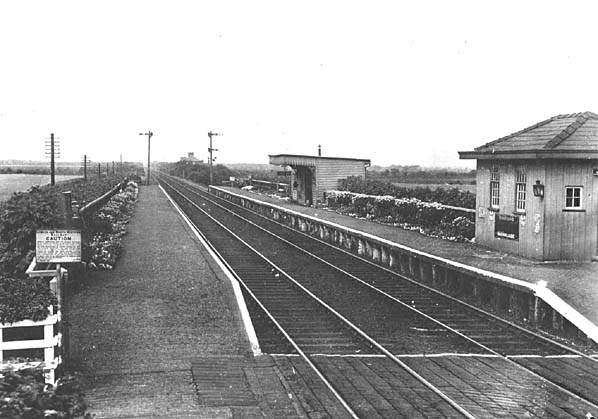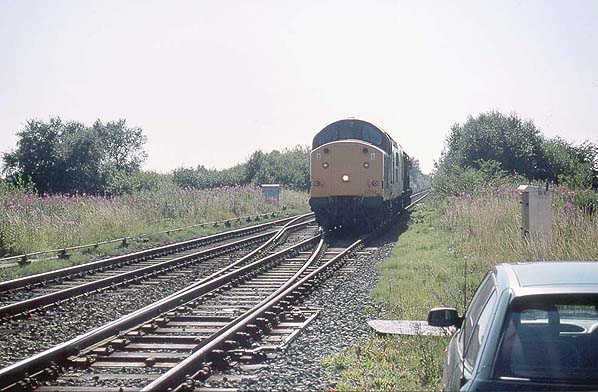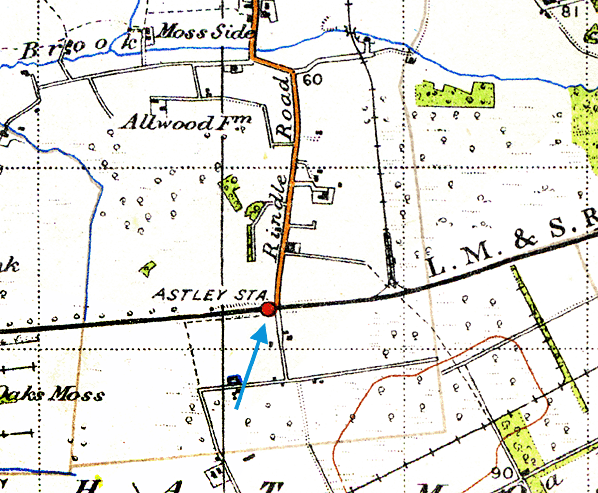|
Notes: Astley was situated on George Stephenson's 1830 Liverpool
and Manchester Railway the world's first railway to cater
for passengers as one of its primary functions. It was also
arguably the worlds first inter city railway. When the line
first opened on the 15th September 1830 no details exist of
the initial intermediate stops and Walkers accurate description
of the line at the time of opening says that fares for intermediate
stops had not been settled implying that initially there might
not have been any stops.
The earliest known company timetable is 1st March 1831, this
did not show times at intermediate stops but did list stops
in fare tables. The company minutes of 26th September 1832 did
give a full list but no further list was given until January
1846.
There were many early changes of stopping place and name so
the early history of intermediate stops is patchy. At first
trains stops at, for example, level crossings where the gatekeeper
issued tickets; perhaps a room in his cottage was available
as a shelter. In 1841 platforms and nameboards were added to
stations lacking them. Many of the stations consisted of little
more than a basic cottage.
Astley opened in the middle years of the 1840's and by the end
of the 19th Century it had been developed into a two platform
station with wooden booking and waiting facilities on the Manchester
platform. The station was located on the west side of a level
crossing on the famous Chat Moss which had been crossed by Stephenson
in 1830 by floating the line on a bed of branches and vegetation
on which an embankment was constructed.
From the beginning the station would have been served by local
trains running between the two cities or on shorted journeys.
A steady stream of express and goods services would have passed
through.
The 1830 Liverpool to Manchester line is still a busy railway
but over the years many of its intermediate stations, including
Astley have closed to passengers. Astley was closed on the on
7.5.1956.
Former railway houses adjacent to the level crossing are still
in existence. Today a signal box dating from 1972 stands on
the site of the westbound platform. An earlier signal box had
stood on the east side of the level crossing.
Click here
for a detailed history of the Edge Hill cutting and tunnels,
including pictures inside the 1829 Crown Street Tunnel
Further reading: Liverpool & Manchester Railway Operations
1831 - 1845 by Thomas J Donaghy
David & Charles 1972 ISBN 0 71535705 0
To see the other
closed stations on the Liverpool & Manchester Railway click
on the station name: Liverpool
Crown Street, Huyton
Quarry, Lea Green,
Collins Green,
Parkside 1st, Parkside
2nd, Kenyon
Junction, Glazebury
and Bury Lane, Flow
Moss, Lambs
Cottage, Barton
Moss 1st, Barton
Moss 2nd, Weaste,
Seedley, Cross
Lane, Ordsall
Lane, Manchester
Liverpool Road
|



old2.jpg)
 Home
Page
Home
Page




